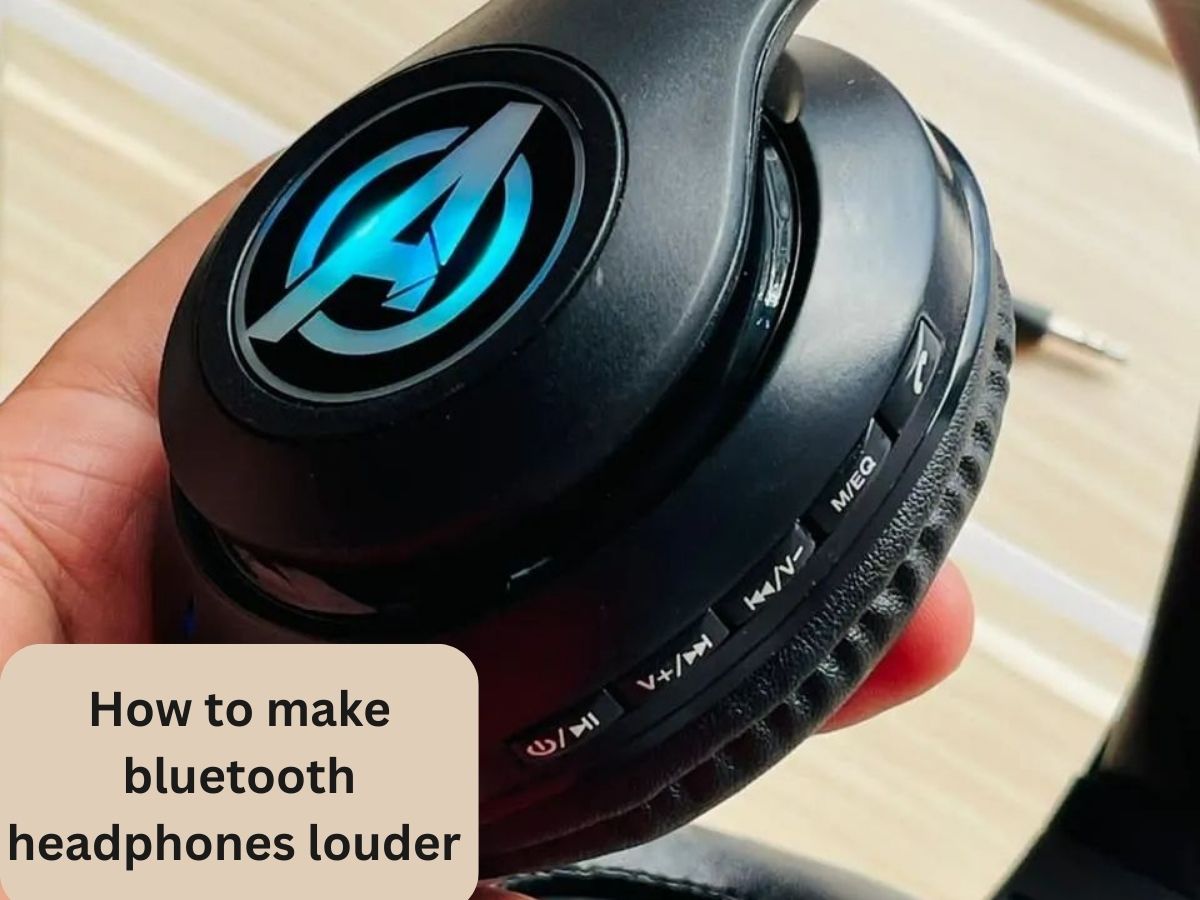Ready to turn up the volume and take your Bluetooth headphone experience to the next level? If you’ve ever wondered how to make Bluetooth headphones louder, you’re in for a treat. We all know that feeling – you’ve got your favorite playlist or podcast playing, but the audio just isn’t hitting that sweet spot.
Don’t worry, we’ve got your back! In this guide, we’ll dive into the world of crisper highs, deeper bass, and all-around amplified audio. Say goodbye to straining to hear your tunes and say hello to an audio adventure that’ll have you immersed in sound like never before.
Whether you’re a music maven, podcast enthusiast, or gaming guru, we’ve got tips, tricks, and expert insights to supercharge your Bluetooth headphones and crank up the excitement. So, if you’re ready to bring your audio to life and master the art of getting the most out of your Bluetooth headphones, let’s dive right into it.
Why Are My Bluetooth Headphones Not Loud Enough?
It’s a scenario we’ve all faced: you put on your Bluetooth headphones, excited to immerse yourself in your favorite tunes, only to find that the volume falls flat.
But before you blame your headphones or start considering a replacement, let’s unravel the mystery of why your Bluetooth headphones might not be as loud as you’d like them to be.
Common Misconceptions about Bluetooth Headphone Volume
Let’s address a common misconception right off the bat: the notion that Bluetooth headphones inherently lack volume compared to their wired counterparts. This couldn’t be further from the truth.
Bluetooth technology has come a long way, and modern Bluetooth headphones are more than capable of delivering impressive audio levels. So, if your Bluetooth headphones aren’t loud enough, it’s not because they’re inherently incapable.
Factors Affecting Headphone Volume
Several factors can influence the perceived volume of your Bluetooth headphones, and understanding them is key to solving the volume puzzle. One significant factor is device limitations.
Some smartphones and other devices come with built-in volume caps to protect your hearing, especially when using headphones. These limits are often adjustable in your device settings, and we’ll delve into how to optimize them later in this guide.
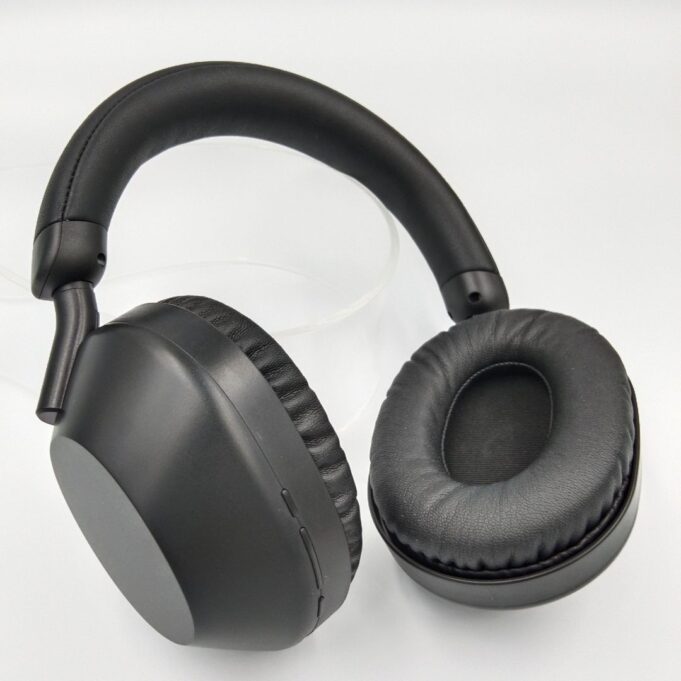
Another crucial factor is the source of your audio. Not all audio files are created equal. If you’re streaming a low-quality audio file or watching a video with poor audio, your headphones might struggle to deliver the booming sound you’re seeking.
Similarly, the platform you’re using to listen to audio might have its volume settings that impact your headphone output.
In addition, some Bluetooth headphones have their limitations in terms of impedance and driver size. These specifications can influence how much sound the headphones can produce at higher volumes.
However, it’s essential to note that this is just one piece of the puzzle, and other factors, like device settings and audio quality, also play significant roles.
Choosing the Right Bluetooth Headphones for Louder Audio
When it comes to maximizing the audio output of your Bluetooth headphones, the choice of headphones itself plays a crucial role. Not all headphones are created equal, and selecting the right pair can significantly impact your listening experience.
Let’s explore the world of headphone specifications and key features that contribute to the optimal volume and audio quality.
The Importance of Headphone Specifications
Think of headphone specifications as the DNA of your audio experience. These technical details provide insights into how headphones will perform across various aspects, including volume, clarity, and bass response.
Paying attention to these specifications can guide you toward headphones that deliver the robust audio output you’re after.
Key Features for Optimal Volume
- Driver Size: The size of the headphone drivers can greatly influence the volume and overall audio quality. Larger drivers have the potential to move more air, producing richer and louder sounds. Look for headphones with larger driver units to get that extra boost in volume.
- Impedance: Impedance measures the resistance of electrical flow in the headphones. Higher-impedance headphones typically require more power to produce sound, which can result in louder audio output. While impedance isn’t the sole factor, it’s a noteworthy consideration when seeking headphones with amplified volume.
- Frequency Response: A wide frequency response range ensures that headphones can accurately reproduce a broader spectrum of sound frequencies. This translates to more vibrant and detailed audio at both low and high volumes.
- Noise Isolation: Effective noise isolation blocks out external sounds, allowing you to listen at lower volumes without losing the details. This can create an illusion of higher volume as the focus remains on the audio itself.
- Equalizer Compatibility: Some headphones come with customizable equalizer settings that allow you to fine-tune the audio profile according to your preferences. This can help emphasize certain frequencies, contributing to a more impactful volume.
- Battery Life: Bluetooth headphones with extended battery life ensure that you can enjoy your amplified audio for longer periods without interruptions.
Remember, it’s not just one feature that makes headphones excel in delivering volume; it’s the synergy of these specifications that creates a satisfying auditory experience.
So, the next time you’re shopping for Bluetooth headphones, pay close attention to these features to ensure you’re investing in a pair that can truly amplify your audio adventure.
Optimizing Device Settings for Maximum Volume
Getting the most out of your Bluetooth headphones involves more than just the headphones themselves. Your device settings play a pivotal role in determining the volume and quality of your audio.
Let’s take a step-by-step journey through adjusting volume settings on different devices, and also explore the magic of equalizer settings.
Adjusting Volume Settings on Various Devices
Smartphones:
- Open the ‘Settings’ app.
- Navigate to ‘Sound’ or ‘Audio’ settings.
- Adjust the ‘Media Volume’ slider to your preferred level.
- Some devices also offer a ‘Volume Limit’ option that you can adjust.
Tablets:
- Access the ‘Settings’ menu.
- Look for ‘Sound’ or ‘Audio’ settings.
- Slide the ‘Media’ volume bar to amplify the audio output.
- Check for any additional volume-related options, like ‘Safe Volume’ settings.
Computers:
- Locate the speaker icon in the taskbar (Windows) or menu bar (Mac).
- Click on the speaker icon to open the volume control.
- Adjust the volume slider to increase or decrease the audio level.
- For advanced settings, access your computer’s audio settings menu.
Exploring Equalizer Settings and Their Impact
Equalizer settings are like the conductor’s baton for your audio orchestra. They allow you to fine-tune the balance of different frequencies to suit your preferences and enhance your headphone’s volume experience.
- Bass: Boosting the bass frequencies can add a punch to your audio, making it feel fuller and more dynamic, enhancing the perceived volume.
- Treble: Increasing treble frequencies adds clarity and brightness to the audio, making vocals and instruments stand out, leading to a crisper overall sound.
- Mid-range: Tweaking the mid-range frequencies can enhance the richness of vocals and instruments, creating a more balanced and immersive audio experience.
- Custom Presets: Many devices offer preset equalizer settings tailored for different genres, like rock, pop, or classical. Experiment with these to find a setting that emphasizes volume while maintaining audio quality.
Remember that while equalizer settings can indeed amplify volume, it’s crucial to strike a balance. Over-boosting certain frequencies might lead to distortion and reduced audio quality. Play around with the settings and find the combination that not only boosts volume but also preserves the integrity of your audio.
By mastering these settings on your devices and harnessing the power of equalizer adjustments, you’ll be well on your way to squeezing every ounce of audio prowess out of your Bluetooth headphones. So, let’s fine-tune those settings and revel in the amplified audio journey.
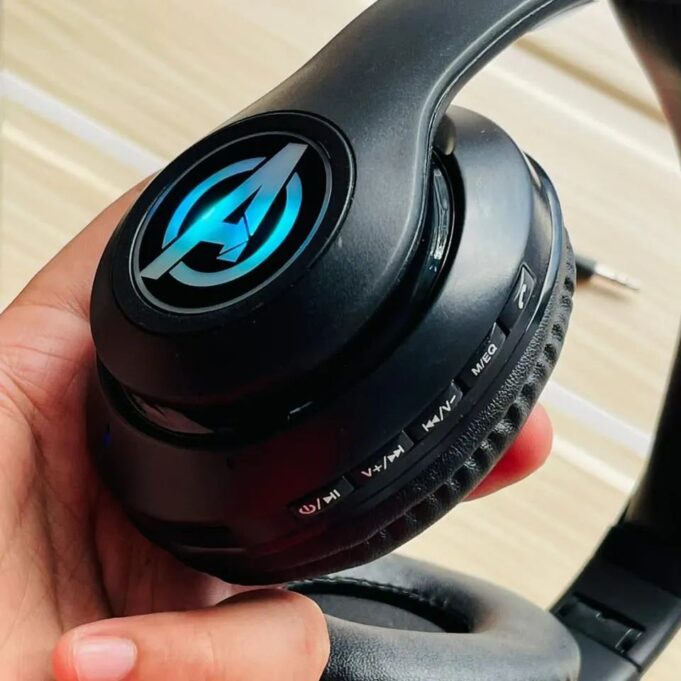
Using Third-Party Apps for Volume Boosting
Sometimes, a little technological boost is all it takes to elevate your Bluetooth headphone experience to the next level. Enter third-party apps designed to amplify headphone volume beyond your device’s default settings. Let’s dive into the world of these apps, explore their features, compatibility, and consider their potential drawbacks.
Popular Apps for Amplifying Bluetooth Headphone Volume
- Volume Booster: This app does exactly what its name suggests—boosts your headphone volume. It can provide a significant volume increase, making your audio more powerful and immersive.
- Equalizer FX: Beyond boosting volume, this app offers customizable equalizer settings, allowing you to fine-tune the audio to your preferences. It’s like having a personal sound engineer in your pocket.
- Precise Volume: This app not only boosts headphone volume but also provides control over various audio streams, such as media, calls, and alarms. It ensures a tailored volume experience for different activities.
Features, Compatibility, and Drawbacks
Features:
- Customizable Boost: These apps often allow you to adjust the volume boost level according to your liking.
- Equalizer Controls: Apps like Equalizer FX let you adjust specific frequency bands, enhancing audio quality while increasing volume.
- Pre-set Modes: Some apps offer predefined modes optimized for different scenarios like music, movies, or gaming.
Compatibility: These apps are generally compatible with various Android and iOS devices, but their effectiveness can vary depending on your specific device and its hardware limitations.
Drawbacks:
- Sound Quality: While these apps can boost volume, they might also introduce distortion or reduce audio quality at higher levels.
- Battery Drain: Amplifying volume requires additional power, potentially leading to increased battery consumption.
- Risk of Damage: Pushing your headphones to extreme volumes could potentially damage them and pose a risk to your hearing.
It’s crucial to approach these apps with caution. While they can provide a noticeable volume increase, it’s recommended to use them in moderation and avoid excessive volume levels. Remember that quality matters just as much as quantity when it comes to your audio experience.
In the end, third-party volume-boosting apps can be a valuable tool, especially when used responsibly. They can provide that extra kick in volume when needed, but it’s essential to be mindful of potential downsides and prioritize the long-term health of your headphones and your hearing.
So, explore these apps with an informed perspective and let them complement your quest for louder audio without compromising quality.
Wired vs. Wireless: Amplification Options
When the quest for maximum volume ensues, the choice between wired and wireless connections can significantly impact your audio experience.
Let’s delve into the battle of wired and wireless amplification, comparing the two methods and uncovering the pros, cons, and practical tips for each.
Wired Connections:
Pros:
- Higher Power Delivery: Wired connections can provide more power to headphones, resulting in louder and more dynamic sound.
- Consistent Quality: Wired connections are less prone to interference, offering a stable audio experience without the potential signal disruptions of Bluetooth.
- Minimal Latency: With no wireless transmission delay, wired connections are ideal for gaming or watching videos, where audio syncing matters.
Cons:
- Tethered Experience: Wired headphones restrict your mobility, and the cable can be cumbersome during activities.
- Compatibility: You need compatible ports on both your device and your headphones for a wired connection.
- Limited Range: Wired connections are restricted by the length of the cable, which can limit your movement.
Wireless (Bluetooth) Connections:
Pros:
- Convenience: Bluetooth headphones offer wireless freedom, allowing you to move without being tethered to your device.
- Multipurpose Use: Bluetooth headphones are versatile for various devices like smartphones, laptops, and even smart TVs.
- Modern Advances: Bluetooth technology has improved significantly, and many Bluetooth headphones now deliver impressive audio quality.
Cons:
- Potential for Interference: Wireless signals can be impacted by obstacles or electronic interference, leading to occasional drops in audio quality.
- Battery Dependency: Bluetooth headphones rely on battery power, which can impact your listening time.
- Latency Issues: Wireless connections might introduce slight audio delay, affecting real-time applications like gaming.
Practical Tips:
- Wired Boost for Volume: When volume is the priority, opting for wired connections can offer a perceptibly louder audio experience.
- Wireless Quality Check: Invest in high-quality Bluetooth headphones with advanced codecs like aptX for improved audio quality.
- Bluetooth Range: Keep your device and headphones relatively close to maintain a strong Bluetooth connection and better audio quality.
- Battery Management: If using Bluetooth headphones, ensure they are fully charged to maintain consistent volume levels.
If volume is your primary goal, wired connections tend to provide a louder and more consistent audio experience. However, the convenience and versatility of wireless Bluetooth headphones have improved greatly, making them a viable option for most everyday scenarios.
Ultimately, the choice boils down to your priorities—loudness, convenience, or a balance between the two. Consider your specific needs and preferences when deciding between these amplification options.
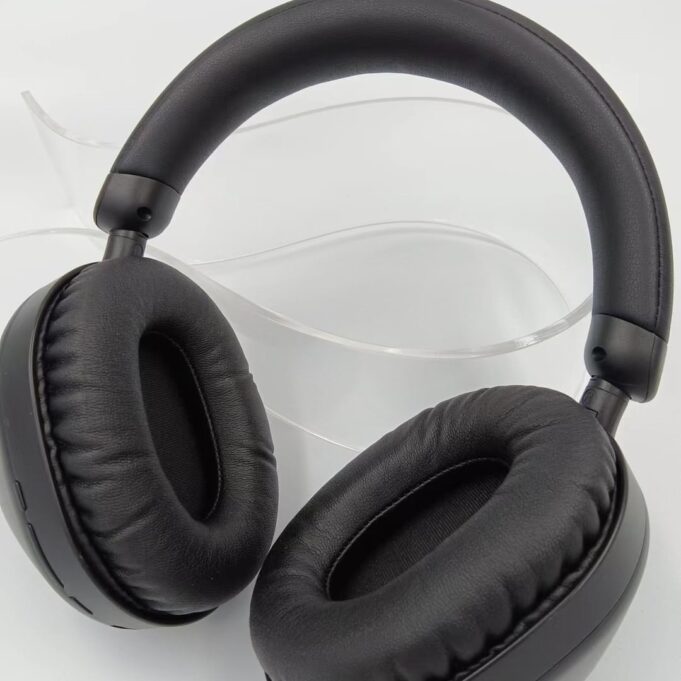
Maintaining Audio Quality While Increasing Volume
The pursuit of louder audio should never come at the cost of audio quality. It’s a delicate balance that requires finesse and a keen ear.
Let’s tackle the concerns of distortion and loss of audio quality head-on, and explore tips to preserve audio clarity while boosting volume.
Addressing Distortion and Loss of Quality
Distortion and reduced audio quality often rear their heads when pushing headphone volume to the limits. This occurs when the headphone drivers struggle to accurately reproduce the soundwaves at extremely high volumes, resulting in audio artifacts or even physical damage to the drivers.
Tips for Preserving Audio Clarity
- Gradual Increase: Avoid the urge to crank the volume to the max right away. Gradually increase the volume until you find the sweet spot where the audio is clear and free from distortion.
- Quality Audio Files: Use high-quality audio files or streaming services that provide higher bit rates and audio resolutions. Higher-quality sources can better handle volume increases.
- EQ Adjustments: If you’re using an equalizer, make minor adjustments to boost specific frequencies instead of cranking up all the sliders. Focus on the frequencies that contribute to the overall sound without causing distortion.
- Active Noise Cancellation (ANC): If your headphones have ANC, consider using it. ANC can minimize background noise, allowing you to enjoy audio at lower volumes without compromising clarity.
- Pause for Precision: During moments of high audio complexity, like intricate instrumentals or vocal harmonies, consider slightly lowering the volume to avoid potential distortion.
- External Amplifiers: If you’re serious about both volume and quality, invest in a high-quality external amplifier that can provide the necessary power without compromising on clarity.
- Use Headphones as Intended: Respect the manufacturer’s recommendations for safe listening levels. Pushing your headphones beyond their intended limits can have consequences for both audio quality and your hearing.
- Regular Maintenance: Keep your headphones clean and well-maintained. Dust, debris, or accumulated earwax can negatively impact audio quality, especially at higher volumes.
- Invest in Quality Headphones: High-quality headphones are designed to handle higher volumes with minimal distortion. If you’re consistently seeking louder audio, consider upgrading to headphones with better drivers and impedance ratings.
Remember, audio quality is a delicate dance between volume and clarity. It’s about striking the right balance that allows you to enjoy the full depth of your music, podcasts, or games without compromising the integrity of the sound.
So, listen responsibly, fine-tune those settings, and let the soundwaves carry you on an audio journey like no other.
Safety Considerations When Increasing Volume
The allure of cranking up the volume for an immersive audio experience is undeniable, but it’s crucial to remember that safety should always be a priority.
Let’s delve into the potential risks of listening to audio at high volumes and equip you with guidelines for responsible listening habits to prevent hearing damage.
Potential Risks of High-Volume Listening:
- Hearing Damage: Prolonged exposure to loud audio can lead to irreversible hearing damage, including tinnitus (ringing in the ears) and hearing loss.
- Ear Fatigue: Listening to audio at high volumes for extended periods can lead to ear fatigue, causing discomfort and reduced sensitivity to sound.
- Sound Distortion: Excessive volume levels can lead to sound distortion, making audio less clear and enjoyable.
Guidelines for Responsible Listening:
- 60/60 Rule: Adhere to the 60/60 rule—listen at no more than 60% volume for a maximum of 60 minutes at a time. Give your ears regular breaks to recover.
- Use Noise-Canceling Headphones: Noise-canceling headphones allow you to enjoy audio at lower volumes by blocking out external noise, reducing the need to increase volume to drown out background sounds.
- Volume Limitation: Some devices allow you to set a maximum volume limit. Use this feature to ensure you don’t accidentally expose yourself to dangerous sound levels.
- Audiologist’s Advice: If you’re consistently listening at high volumes or have concerns about your hearing, consult an audiologist for guidance and a hearing evaluation.
- Know Your Headphones: Be aware of your headphone’s maximum recommended volume levels. Many headphones now come with built-in volume-limiting features to protect your hearing.
- Environmental Awareness: In noisy environments, it’s common to crank up the volume to compensate. Instead, opt for noise-canceling features or isolate yourself from noise as much as possible.
- Take Breaks: Give your ears regular breaks when listening for extended periods. It’s a chance for your ears to recover and for you to reassess the volume level.
- Check for Signs: If you experience ringing in your ears, muffled hearing, or discomfort after listening, it’s a sign you’ve been exposed to excessive volumes.
- Educate Others: If you have children or family members using headphones, educate them about responsible listening habits to ensure their long-term hearing health.
Your ears are precious and deserve protection. While the allure of blasting your favorite tunes at full volume is tempting, remember that responsible listening ensures you can continue to enjoy audio for years to come without compromising your hearing. Striking that balance between volume and safety is the key to a fulfilling and lasting auditory journey.
What to Do if Your Bluetooth Headphones Still Aren’t Loud Enough
Encountering volume issues with your Bluetooth headphones can be frustrating, but there’s no need to throw in the towel just yet. Let’s walk through a checklist of steps you can take to address persisting volume problems and provide guidance on seeking professional help if needed.
Checklist of Steps:
- Check Device Volume: Ensure that both your device’s volume and the headphones’ volume are turned up to the maximum. Sometimes, the issue lies in one of the volume settings being too low.
- Equalizer Settings: Double-check your device’s equalizer settings to ensure none of the frequency bands are significantly lowered. Adjusting these bands can affect perceived volume.
- Bluetooth Range: Make sure your headphones are within the effective Bluetooth range of your device. Walls or obstacles can weaken the signal, leading to reduced volume.
- Bluetooth Interference: Minimize interference by moving away from other electronic devices that could be disrupting the Bluetooth connection.
- Update Firmware: Check if there are any available firmware updates for your headphones. Manufacturers often release updates to improve overall performance.
- Device Compatibility: Confirm that your headphones are compatible with your device. Some headphones may not reach their full volume potential with certain devices.
- Audio Source Quality: If you’re streaming audio, make sure you’re using high-quality sources. Low-quality audio files can lead to reduced volume and poor sound.
Seeking Professional Help:
If you’ve gone through the checklist and your Bluetooth headphones still aren’t delivering the desired volume, it might be time to consider seeking professional assistance:
- Manufacturer Support: Reach out to the headphone manufacturer’s customer support. They can guide you through troubleshooting steps specific to your model and offer solutions.
- Audio Technician: If you suspect a hardware issue, like a faulty driver or amplifier, consult an audio technician. They can diagnose and repair any technical problems.
- Upgrade Consideration: If your headphones are outdated or consistently underperforming, it might be worth considering an upgrade to a newer model with improved volume capabilities.
Remember that persistence pays off. By systematically working through the troubleshooting steps and seeking professional help when necessary, you can potentially resolve volume issues and get back to enjoying your audio at the desired levels. Whether it’s a simple fix or a more complex solution, the goal is to ensure you’re able to immerse yourself in rich, loud audio once again.
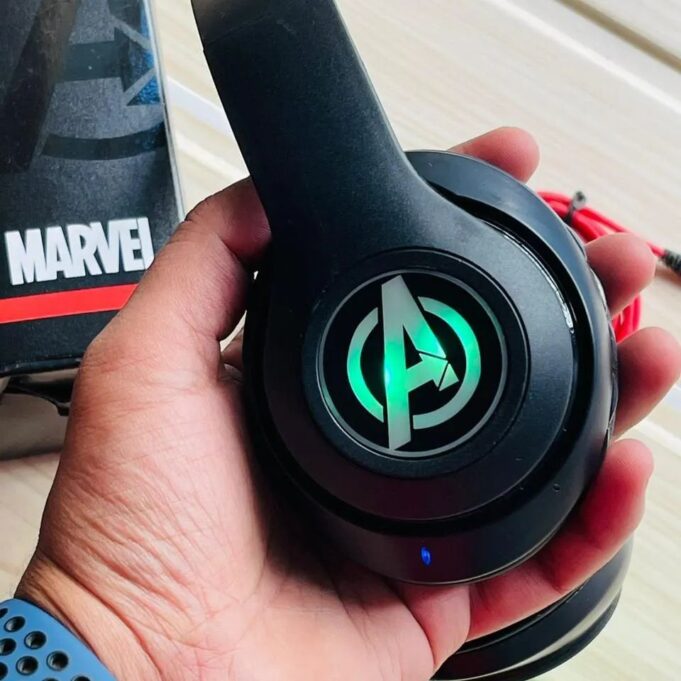
How to Make Bluetooth Headphones Louder FAQs?
Can I damage my headphones by making them too loud?
Absolutely, yes. Listening to audio at excessively high volumes can potentially damage your headphones. When you push headphones to their limits, the audio drivers within them may struggle to accurately reproduce sound waves.
This can lead to distortion, decreased audio quality, and in extreme cases, physical damage to the drivers. Moreover, your ears are equally susceptible.
Prolonged exposure to loud audio can cause permanent hearing damage, including tinnitus (ringing in the ears) and hearing loss. To prevent this, adhere to responsible listening practices and avoid cranking up the volume to levels that are uncomfortable or painful.
Why do some devices have a lower maximum volume with Bluetooth?
The limitation of maximum volume with Bluetooth can often be attributed to device manufacturers implementing safety measures to protect your hearing. Many smartphones and tablets come with built-in volume limits for headphones to prevent users from listening at dangerously high levels.
This is especially important for Bluetooth headphones, as their wireless nature might lead users to overlook their volume levels. These limitations can usually be adjusted in the device settings, but it’s important to remember that these safeguards are in place for your long-term hearing health.
Is it better to use wired headphones for louder audio?
When it comes to achieving louder audio, wired headphones tend to have an advantage due to the higher power delivery they can receive. Wired connections can provide headphones with more power, resulting in potentially louder and more dynamic sound.
Additionally, wired connections are less prone to interference, offering a more stable audio experience without the potential signal disruptions that Bluetooth connections might encounter.
However, it’s important to note that advancements in Bluetooth technology have improved wireless audio quality, making wireless headphones a viable option for most listening scenarios.
How can I tell if my headphones are capable of producing louder sounds?
Several factors determine a headphone’s ability to produce louder sounds. Look for these indicators:
- Impedance: Headphones with higher impedance ratings usually require more power to produce sound, potentially leading to louder audio.
- Driver Size: Larger driver units often result in louder and more powerful audio output.
- Amplifier Compatibility: If your headphones can be connected to an external amplifier, it can significantly boost their audio output.
- Headphone Specifications: Review the manufacturer’s specifications for any mention of higher volume capabilities.
- Expert Reviews: Look for professional reviews that mention the headphones’ volume potential and overall audio quality.
Keep in mind that while these factors contribute to potential loudness, it’s essential to prioritize audio quality alongside volume. Striking a balance between volume and clarity ensures a satisfying and safe listening experience.
Conclusion
In the world of audio enthusiasts, the quest for louder Bluetooth headphone volume is a journey that marries technology and passion. We’ve navigated through the intricacies of amplification, troubleshooting, and responsible listening, all while keeping audio quality at the forefront.
Your desire to elevate your auditory experience is valid, and armed with the knowledge gained from this guide, you’re well-equipped to embark on your sonic adventure.
Remember, it’s not just about cranking up the volume; it’s about striking the perfect harmony between volume and audio clarity. From understanding the specifications that influence volume to optimizing device settings, exploring third-party apps, and making the choice between wired and wireless connections, you’ve uncovered a treasure trove of insights to enhance your audio journey.
Responsible listening is the compass that guides you through this journey. Your hearing health is paramount, and adhering to guidelines like the 60/60 rule, using noise-canceling features, and knowing when to seek professional help will ensure you can savor the world of sound without compromising your well-being.
So, as you embark on your audio expedition armed with newfound expertise, crank up the volume responsibly, and let the melodies, beats, and dialogues envelop you in a symphony of sound like never before. With every note, every beat, and every word, you’re not just experiencing sound; you’re experiencing life itself, elevated to a whole new level.

